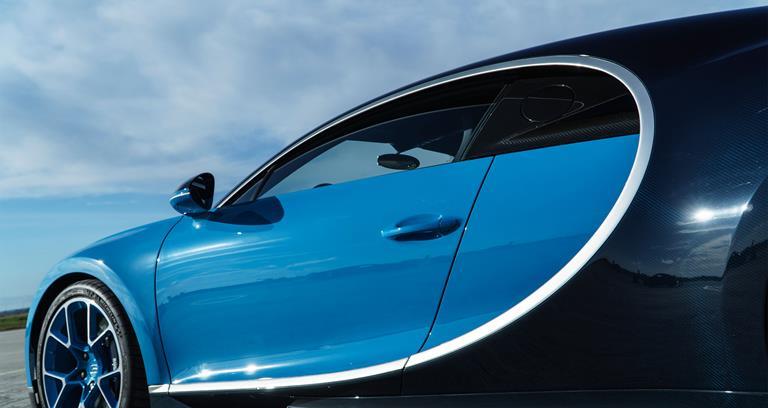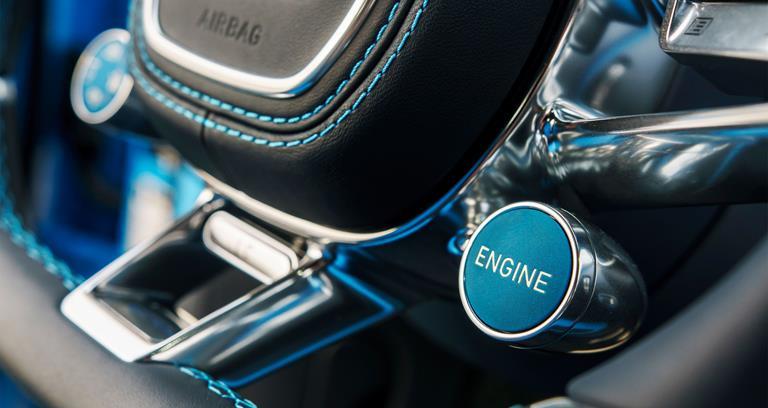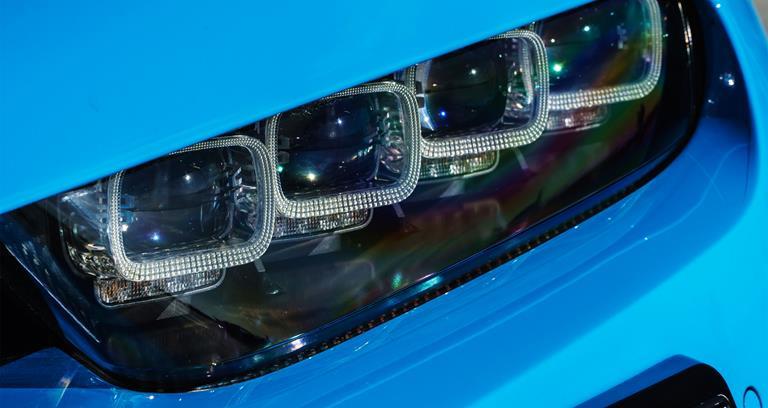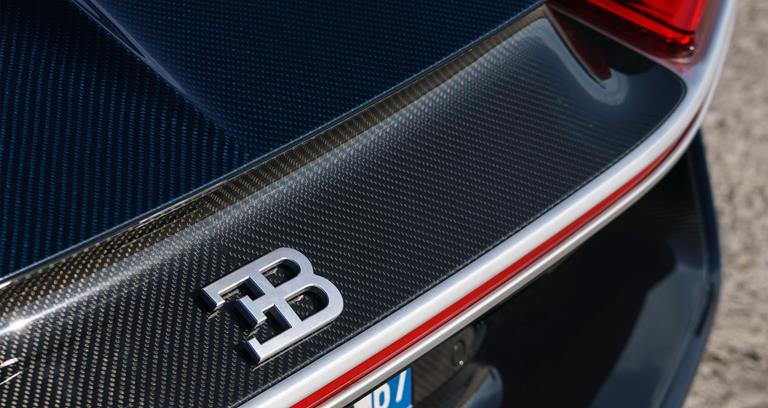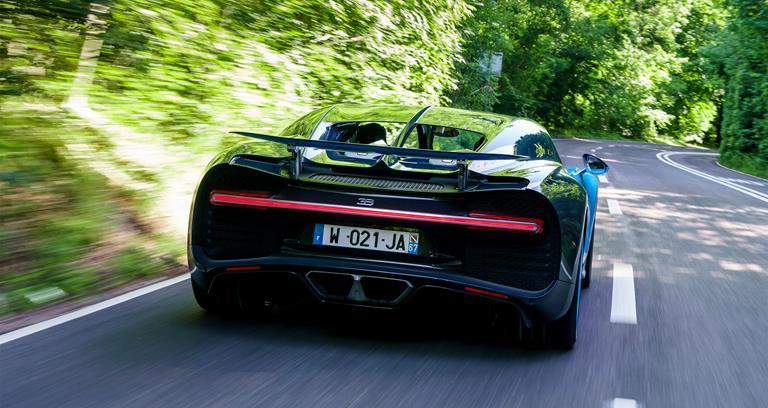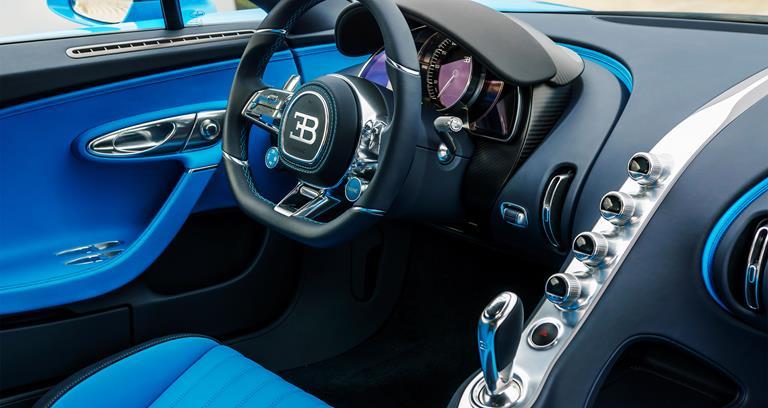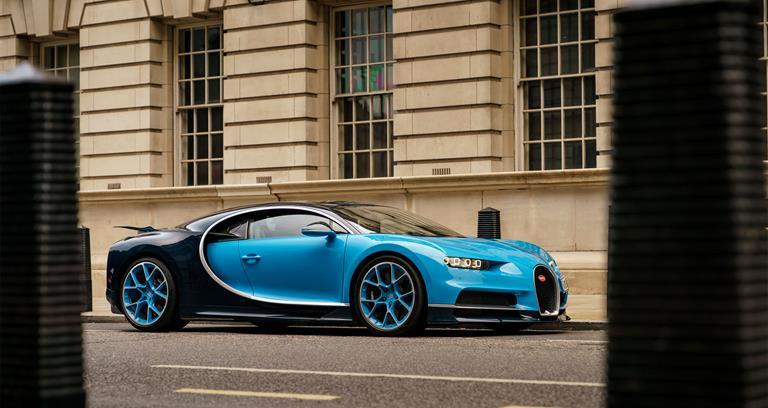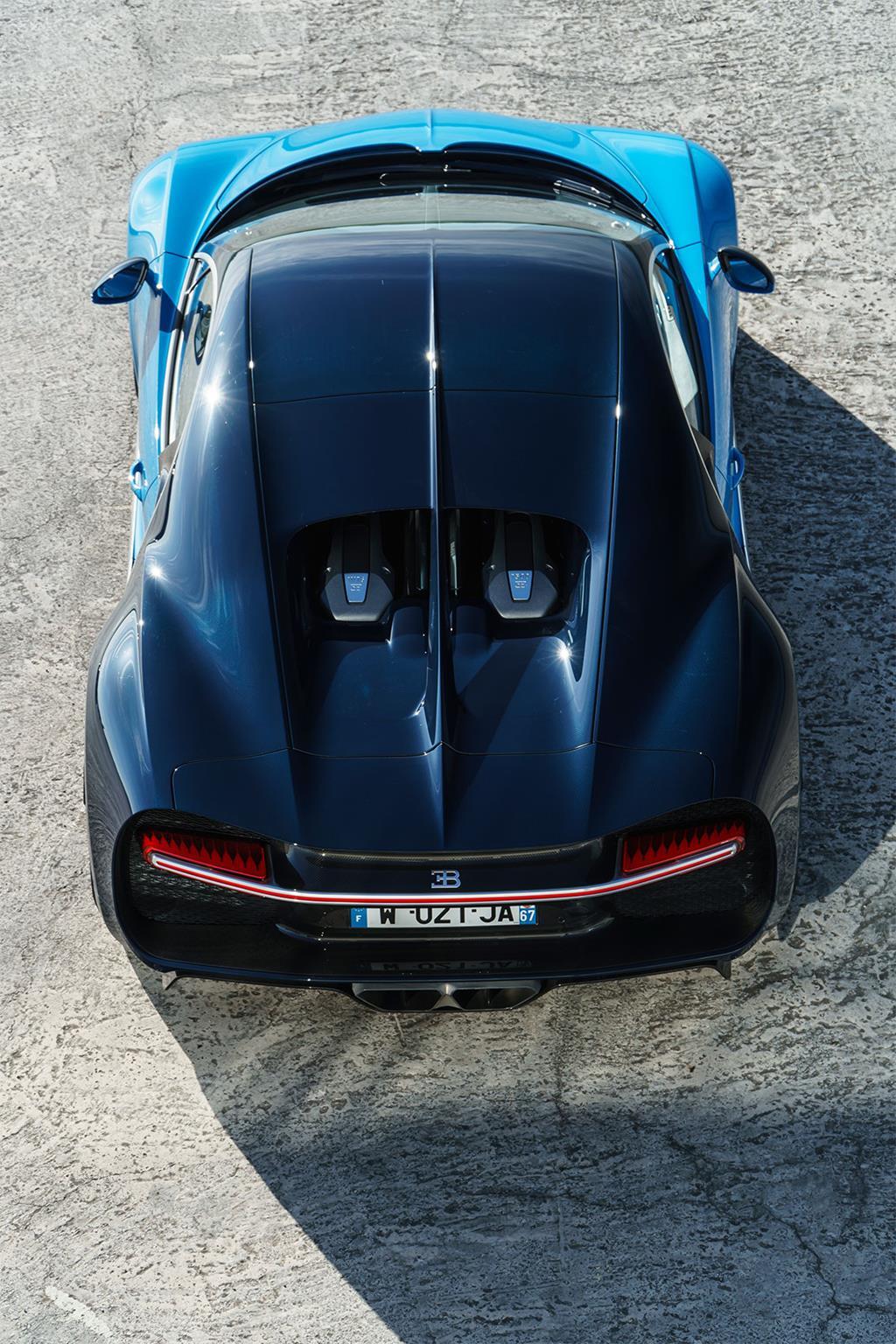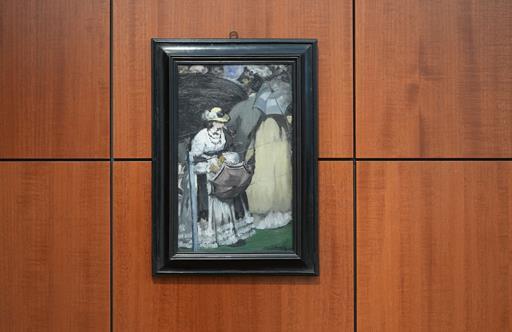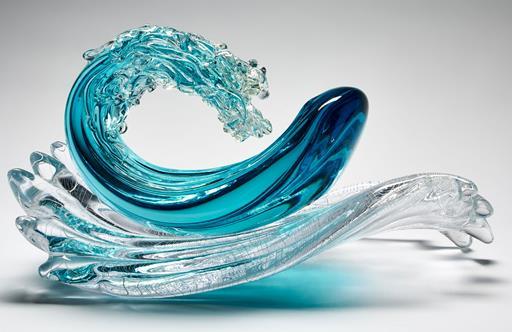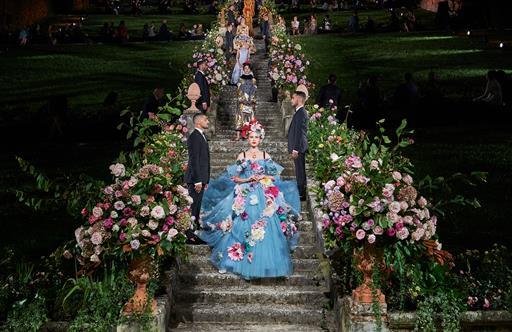Bugatti Chiron: Demanding Deference
A glorious display of contemporary coachbuilding with an immense presence
“Put the seat a little closer to the steering wheel.” I hadn’t quite appreciated why this might be important at the helm of the imposing Chiron. But all would become clear.
Driving a Chiron demands a certain deference. It is an event, a phenomenon. It is a glorious display of contemporary coachbuilding and craftsmanship of the highest order. It has an immense presence, with such bold geometric forms, more than a little reminiscent of the exuberant Art Deco style. It is a step change from its predecessor, the Veyron: it is bolder, fresher and, importantly, every feature goes beyond mere visual spectacle. Each aspect is there for a reason, with function and form at one.
Up front, the strong face is dominated by the classic Bugatti inverted-horseshoe grille made famous on its cars of the 1920s. Why have a mere four or even six headlamps when eight, deeply recessed LED projector lights will do? The rearmost plane has a clean, single light spanning the width of the car, above which sits the massive rear wing for fine control of downforce and to act as a considerable air brake.
The cab-forward profile carries the car’s most defining feature: the C-bar, or – more formally – the Bugatti line, hinting at the Type 57SC Atlantic of the mid-1930s. In profile, this separates the passenger section from the business end where four banks of cylinders in double-vee formation generate a formidable 1,500hp. All of the Chiron’s statistics are impressive: they are simply orders of magnitude larger than those of any regular car.
When one is ensconced in the intimate cabin, it is clear Bugatti has been careful not to use features that will age the car. There is no massive screen dominating the dashboard, just three subtle displays either side and below the sizeable analogue speedometer. Finely machined controls, all knurled, polished and exceptionally tactile, grace the fascia.
The Chiron is not intimidating yet once the selector is pushed across into ‘drive’ and the accelerator pedal nursed forward, the car reveals a seriousness and determination. Throttle response is simply alive and it takes a couple of minutes to learn how to feather in the power from the considerable beast of an engine. At more than two metres wide (and with left-hand drive) it takes some concentration to position the car on narrow British country lanes.
The Chiron has been engineered not only to attain a considerable top speed (currently limited to 420 km/h at the turn of the special ‘Bugatti key’) but also to reach this in the shortest time possible, while maintaining composure with the car’s clever adaptive chassis. It does this remarkably well. And arguably the Chiron’s most impressive ability is to bring two tonnes of car to rest from 200 km/h in a mere 125 metres.
And so we explore the mind-blowing acceleration. At any speed the Chiron is blisteringly eager. There is a high-pitched whoosh as the four turbochargers spool up and simultaneously the speedometer leaps clockwise in an improbable flash. Less than 2.5 seconds to 100km/h from standstill means I am forced backward into the finely upholstered leather seat and away from the steering wheel, now understanding in an instant why I needed to sit closer.
Perhaps the greatest challenge is not controlling the Chiron but holding on and comprehending the rate at which any clear road ahead rapidly diminishes. It is impossible not to grin inanely with the sheer thrill of the forces at one’s command. It isn’t a supercar; it is a hyper-car.
Bugatti plans to build just 500 examples of the Chiron, ensuring exclusivity for what is both a very special car indeed and an astonishing piece of automotive art.
Visit bugatti.com
